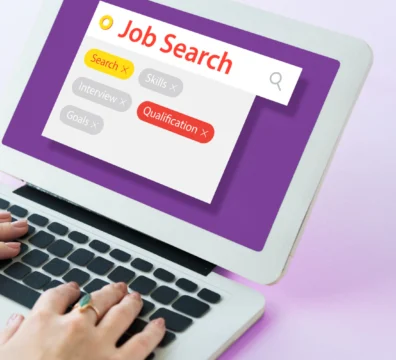Employee conflicts are inevitable in any workplace, but how we handle them makes all the difference. Welcome to our comprehensive guide on employee conflict resolution. Here, we’ll explore practical strategies and best practices to resolve disputes and restore harmony.
Whether you’re a supervisor, HR professional, or a team member, this guide will provide valuable insights into employee dispute resolution in a way that strengthens team dynamics. From understanding the basics to implementing practical solutions, we’ll navigate through the essential steps for creating a more cooperative and productive work environment.
Let’s dive into the world of employee conflict resolution, where every challenge is an opportunity for growth and understanding.
Employee Conflict Resolution: Understanding the Basics
Employee conflict resolution is all about handling disagreements in the workplace. So, it’s an essential skill. Conflicts happen, whether between team members with different viewpoints or due to misunderstandings.
Firstly, it’s crucial to understand that not all conflict is bad. Sometimes, it can lead to creative solutions and better understanding among employees. So, the key is how it’s managed. Effective conflict resolution involves open communication, empathy, and a willingness to find a mutually beneficial solution.
Employee conflict resolution starts with identifying the root cause of the conflict. So, is it a clash of personalities? A misunderstanding? Or maybe different work styles? Recognising the source is the first step to resolving it.
Next, conflict management for supervisors is all about creating an environment where everyone feels heard. So this means encouraging open dialogue and ensuring each party can express their perspective without fear of judgement.
Active listening plays a big role in employee conflict resolution. Therefore, it’s not just about hearing the words but understanding the emotions and motivations behind them. This helps in finding common ground and moving towards a resolution.
Also, it’s important to stay neutral. As a mediator, maintaining impartiality helps gain the trust of all parties involved. It ensures the process is fair and focused on resolution, not blame.
Finally, finding a solution that works for everyone involved is the goal. This might include compromise or finding a new way of working together. Employee conflict resolution should be practical and acceptable to all parties.
In short, employee conflict resolution is about understanding the problem, listening to all sides, and working towards a solution that benefits everyone. So, it’s a process that resolves the immediate issue and can lead to a stronger, more cohesive team.
Top 10 Strategies for Dealing with Employee Conflict
Effectively dealing with employee conflict is crucial for maintaining a healthy workplace. But how to resolve conflict between employees at work?
Here are some strategies for employee conflict resolution:
Address the Issues Without Delay
Don’t let conflicts fester. Address them as soon as they emerge to avoid further escalation.
Allow Open Communication Among The Staff
Encourage open and honest discussions. Create a safe area in which workers may discuss their concerns.
Active Listening Can Help Save The Day
Listen to all parties involved without judgment. Understand their perspectives and feelings.
Identify Common Goals To Foster Camaraderie
Remind conflicting parties of their shared objectives and interests. This can often shift the focus from individual differences to collective goals.
Empathy and Understanding For The Win
Show empathy. Acknowledging each person’s feelings can de-escalate tension.
Find A Common Ground Between Disputing Parties
Aim for solutions that satisfy all parties involved. Compromise may be necessary.
Set Clear Expectations From The Resolution
Be clear about acceptable behaviour and the consequences of continued conflict.
Use Unbiased Mediators
Sometimes, bringing in an unbiased third party can help resolve deeper conflicts.
Access To Right Training
Provide conflict resolution training. It equips employees with the skills to handle disagreements constructively.
Follow-Up With The Involved Parties
After resolving a conflict, check in with the involved parties. Ensure that the resolution is effective and the relationship is mending.
These strategies can help resolve employee conflicts and build a more understanding and cohesive work environment.
Resolving Conflict Between Employees: Best Practices
Successfully resolving conflicts between employees is vital for a harmonious workplace and increased productivity.
Here are some unique best practices to consider for employee conflict resolution:
Structured Conflict Resolution Meetings
Arrange structured meetings specifically for conflict resolution, guiding the conversation with clear objectives.
Clarify Misunderstandings
Often, conflicts arise from misunderstandings. Clarify any miscommunications that might have contributed to the conflict.
Establish Ground Rules for Discussion
Set rules for respectful communication during conflict discussions, like no interruptions and speaking in turns.
Focus on Specific Behaviours and Events
Encourage employees to discuss specific incidents and behaviours rather than generalising or making personal attacks.
Explore Solutions Together
Facilitate a brainstorming session where conflicting parties can propose their own solutions to the problem.
Agree on a Follow-Up Plan
Develop a clear plan for how the employees will interact moving forward and how they will address similar issues if they arise again.
Encourage Accountability
Have each party acknowledge their role in the conflict and commit to making changes.
Document the Agreement
Keep a record of what was agreed upon to ensure clarity and accountability.
Offer Support and Resources
Provide access to resources like counselling or mediation services if needed.
Promote a Culture of Respect
Reinforce the importance of respect and teamwork regularly, not just during times of conflict.
By implementing these best practices, conflicts between employees can be resolved more effectively, leading to a healthier, more productive workplace environment.
How 6 Pence Helps
Effectively management and employee conflict resolution are crucial to maintaining a positive and productive workplace. However, it’s just one piece of the larger puzzle of staffing and hiring. Navigating these areas can be complex, but 6 Pence offers comprehensive solutions to ease these challenges.
At 6 Pence, we specialise in a range of services designed to streamline your staffing and recruitment processes. From Staff Outsourcing to Payroll Outsourcing and Recruitment, we cover all bases to ensure your HR needs are met efficiently and effectively. Operating across Dubai, Iraq, Oman, and Bahrain, our reach and expertise are wide, allowing us to cater to diverse industries and organisational needs.
We’re here to simplify your HR processes and free you to focus on what you do best – running your business. Contact us for more information, and let us help you create a more harmonious and productive workplace.
Frequently Asked Questions
What is employee conflict?
Employee conflict is when two or more employees disagree or clash due to different opinions, styles, or interests. It can impact their work and the team’s dynamics.
How do you resolve employee conflict?
To resolve employee conflict, encourage open communication, listen to each side, find common ground, and work together to find a fair solution. It’s important to address conflicts early and constructively.
What is the role of HR in conflict resolution?
HR’s role in employee conflict resolution is to facilitate discussions, ensure fairness, provide guidance, and help find a resolution that works for everyone involved. They also create policies and training to prevent conflicts.
Also Read: Building a Robust Workforce with Blue Collar Recruitment Strategy




































































































